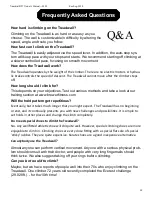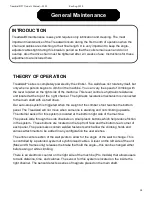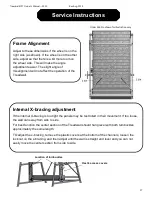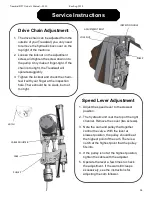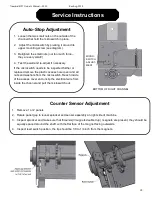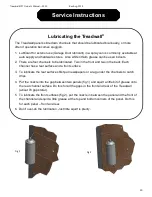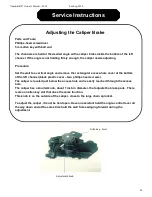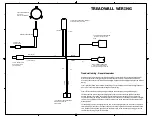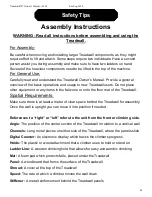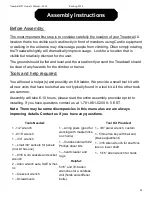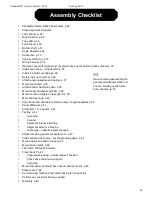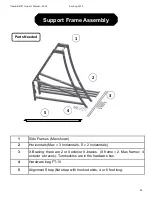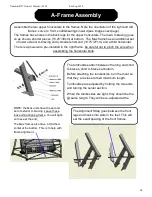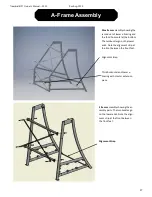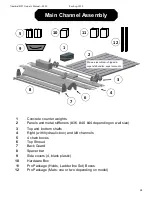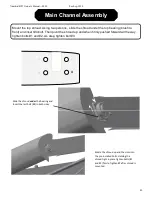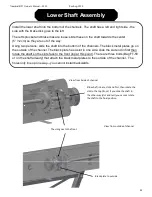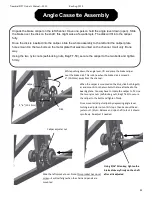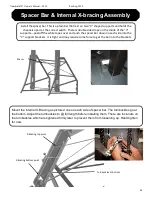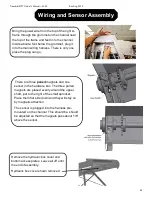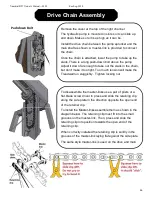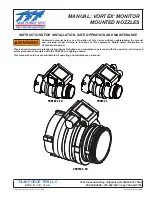
22
Treadwall®FT Owner’s Manual—2019
Rev Aug 2019
Safety Tips
Safety Tips
Assembly Instructions
WARNING - Read all instructions before assembling and using the
Treadwall.
For Assembly:
Be careful when moving and installing larger Treadwall components, as they might
require effort to lift and attach. Some steps require two individuals. Have a second
person assist you during assembly and make sure to have two ladders on hand.
Several of the heaviest components need to be lifted to the top of the machine.
For General Use:
Carefully read and understand the Treadwall Owner’s Manual. Provide a general
overview of the basic operations and usage to new Treadwall users. Do not place
other equipment or any items in the fall zone or onto the floor mat of the Treadwall.
Spatial Requirements:
Make sure there is at least a meter of clear space behind the Treadwall for assembly.
Once the wall is upright you can move it into position if needed .
References to “right” or “left” refers to the unit from the front or climbing side.
Angle
: The position of the center section of the Treadwall in relation to a vertical wall
Channels:
Long metal pieces on either side of the Treadwall, where the panels slide
Digital Counter:
An electronic display which tracks the climbers progress
Holds:
The plastic or wood attachment that a climber uses to hold or stand on
Ladder Line:
A wooden climbing hold that allows for easy and aerobic climbing
Mat:
A foam pad which protects falls, placed under the Treadwall
Panel:
A wood board that forms the surface of the Treadwall
Shroud:
A cover at the top of the Treadwall
Speed:
The rate at which a climber moves the wall down
Stiffener:
A metal reinforcement behind the Treadwall panels
Summary of Contents for TREADWALL Max Frame
Page 2: ......




